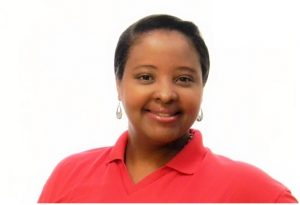During the journey of my Ph.D., I worked as a local graduate student as part of the chemistry department at the University of Puerto Rico – Rio Piedras campus. One of the most beautiful aspects of my overall experience was meeting people from other countries who were also working on their respective projects with different science backgrounds. Getting to know international lab peers in my lab environment helped me to understand that I belong to an organization where diversity and inclusivity in the work environment are strongly promoted and encouraged. This fantastic occasion to meet them as part of my work has been a great opportunity to grow personally and academically. Looking in retrospect, when I started in the graduate program, I never imagined that I could be able to meet scientists from other countries in my graduate research environment. At the Rio Piedras campus, and more specifically in the Molecular Sciences building, there is a great diversity of researchers who come from all around the world. I met people from Germany, Chile, China, Colombia, Costa Rica, Spain, Haiti, India, Peru, Portugal, Dominican Republic, and Venezuela among others. It’s beautiful to see how science brings us all together in a common place despite our origin of country, language, and culture. Reference: https://fb.watch/awsdFyCJtz/, International Students at the Molecular Sciences building.
Looking beyond the chance to exchange laboratory techniques, or the jargon we use to talk in our countries, there are additional aspects to share with our international lab peers and thus encourage diversity and inclusion. A fantastic experience that I remember happened a couple of years before the era of the current pandemic. Prior to the lockdown, when we were able to gather, all researchers including the international students were invited to a lunch to celebrate Thanksgiving. We were invited to prepare and share a typical dessert from our country of origin (in my case Puerto Rico). It was a very cheerful, diverse, and joyful experience because we could taste the different international desserts without the need to travel outside of Puerto Rico. What a great advantage ours was! For a moment, it was like traveling without leaving Puerto Rico. In addition to our traditional Puerto Rican menu for Thanksgiving that includes the traditional oven-roasted turkey, “arroz con gandules”, and salad, the international students brought their favorite desserts to have a cultural exchange during the lunch. A lot of months have passed since that lunch and honestly, I do not recall the desserts’ exact names, but I always have the sweet memory of that amazing lunch. We tasted several custards, rice puddings, and cream-based desserts from Costa Rica, Colombia, India, and Peru, in addition to the Puerto Rican desserts. This experience was undoubtedly a very special one, different, unrepeatable, and very memorable for many of us who tasted for the first time a different food in a Thanksgiving lunch. At the same time, it was an excellent activity to talk and share outside the laboratory area.
Certainly, sharing a lunch promotes an excellent environment to get to know each other, but there are additional events where we can encourage inclusion with our international peers. Perhaps providing information about relevant academic events related to our local campus might be helpful. Maybe some international students are unaware of this type of information because they just recently arrive, or it is something uncommon in their country of origin. For example, a relevant academic event is to participate in the US national science congresses to share our investigation results. I have an anecdote where I once mentioned the annual national meeting of the American Chemical Society (ACS) to an international colleague. This annual meeting is one of the largest and most important congresses in the field of chemistry, where more than 5,000 people come together to exchange ideas and present their works. Also, it is a great opportunity to meet new people and to participate in career development workshops. Sharing this congress information was very beneficial because she thought that only Puerto Rican students were able to participate in this type of event. I told her that I knew of other international students who participated before in the congress and that she could check in the graduate affairs department if there were available funds to cover her travel expenses. I also mentioned this congress to her because it was an excellent opportunity to expand her professional network. She looked further for the funding eligibility, and she inquired for more information and to her surprise, she was able to travel to participate in the event. The department had partial funds that she could use to cover some expenses, so she can travel to present a poster. Weeks later at the convention, I met her, and she looked very happy and grateful that I shared this information with her. She was able to go and participate to present her work.
Undoubtedly there are many reasons in our research journey that join us together and give us the chance to enjoy the benefits of diversity and inclusion of our lab environments. Sharing moments with international students outside the lab is also a unique experience that we are invited to embrace. We can all contribute (locals and international) to forge a diverse and inclusive environment where it nurtures us to grow not only as professionals at an academic level, but also enrich our personal memories.

Jessika Pazol Ph.D., works as a postdoctoral fellow as part of the CREST Center for Innovation, Research, and Education in Environmental Nanotechnology (CIRE2N) based in the University of Puerto Rico Río Piedras Campus. Currently her research focuses on exploring new polymeric nanomaterials to design anti-biofouling membranes for water treatment applications. She completed her PhD in chemistry from the University of Puerto Rico at Rio Piedras campus under the supervision of Dr. Eduardo Nicolau. Prior to joining the Rio Piedras campus, she received her B.S. in chemical engineering from the University of Puerto Rico at Mayaguez campus.
Total Page Visits: 4119



